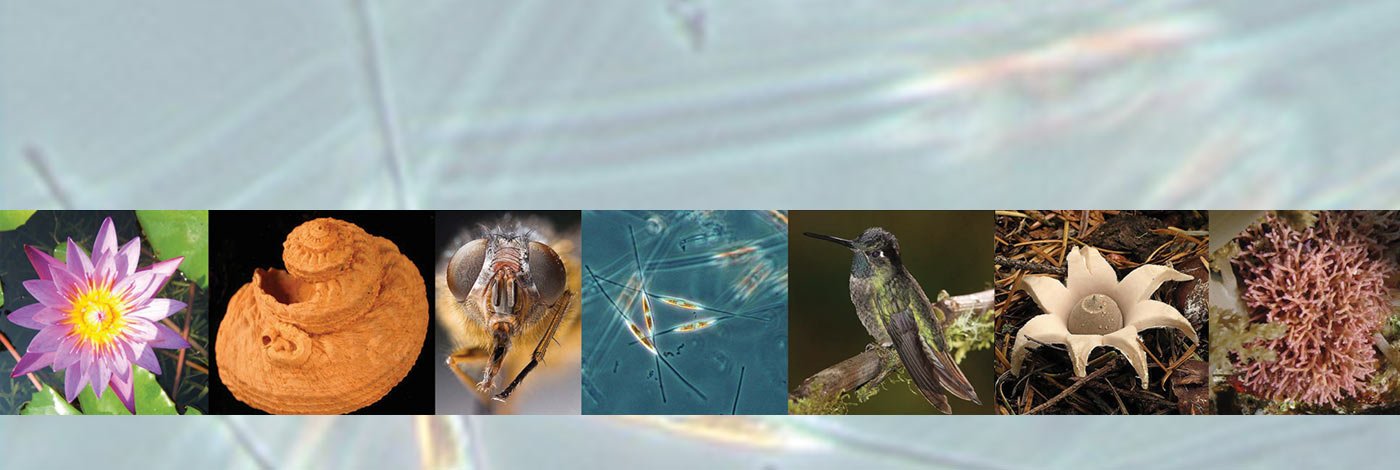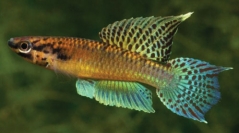During a survey of the fishes in the region of the Wonga-Wongué Presidential Reserve, 14 new populations of the subgenus Chromaphyosemion Myers, 1924 were found. These observations extend the previously known distribution range of the subgenus 120 kilometres southward. None of these populations could be related to any described species. Based on the colouration of the males and females, together with a genetic marker (mitochondrial DNA cytochrome b sequences), the populations studied are grouped into six new species which are described in this article, all close to Aphyosemion alpha Huber, 1998 with which they share the presence of a black alpha-shaped mark on the pre- and post-opercular region. The group composed of A. alpha and the six new species is referred to here as the A. alpha species group. All the new species, A. aurantiacum Chirio, Legros & Agnèse sp. nov., A. barakoniense Chirio, Legros & Agnèse sp. nov., A. flammulatum Chirio, Legros & Agnèse sp. nov., A. flavocyaneum Chirio, Legros & Agnèse sp. nov., A. pusillum Chirio, Legros & Agnèse sp. nov. and A. rubrogaster Chirio, Legros & Agnèse sp. nov., are further unambiguously diagnosed by unique combinations of colour patterns, making it possible to generate an identification key for the A. alpha species group. It is likely that the coastal dunes of Wonga-Wongué that form a sandy relief, could have led to the fragmentation and then isolation of the hydrographical networks that flow into the Atlantic Ocean, making possible a significant number of allopatric speciations.


 European Journal of Taxonomy
2018 - Pages 1-28
European Journal of Taxonomy
2018 - Pages 1-28